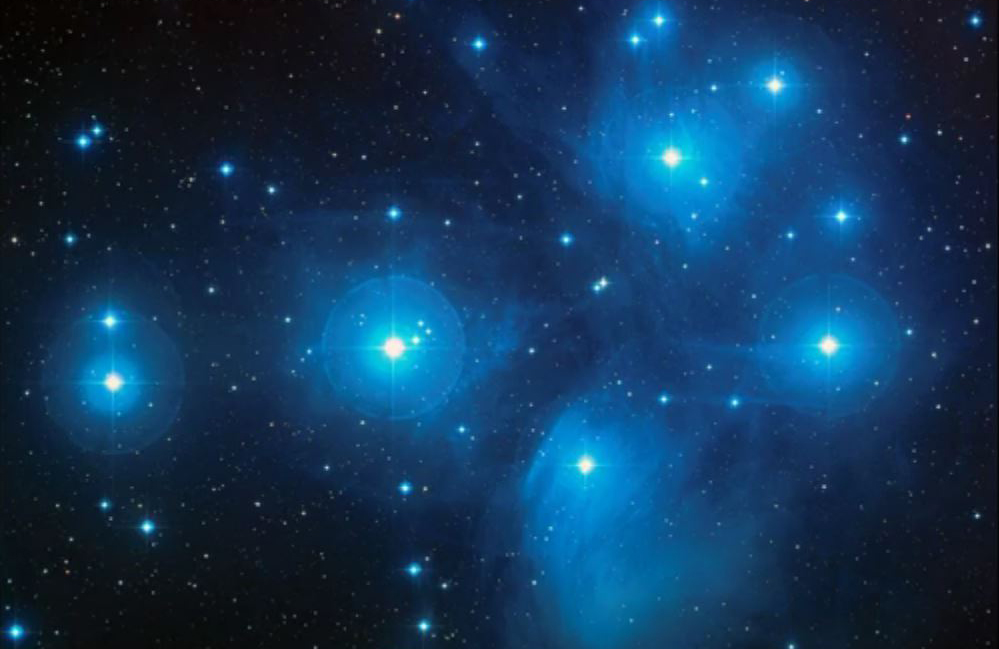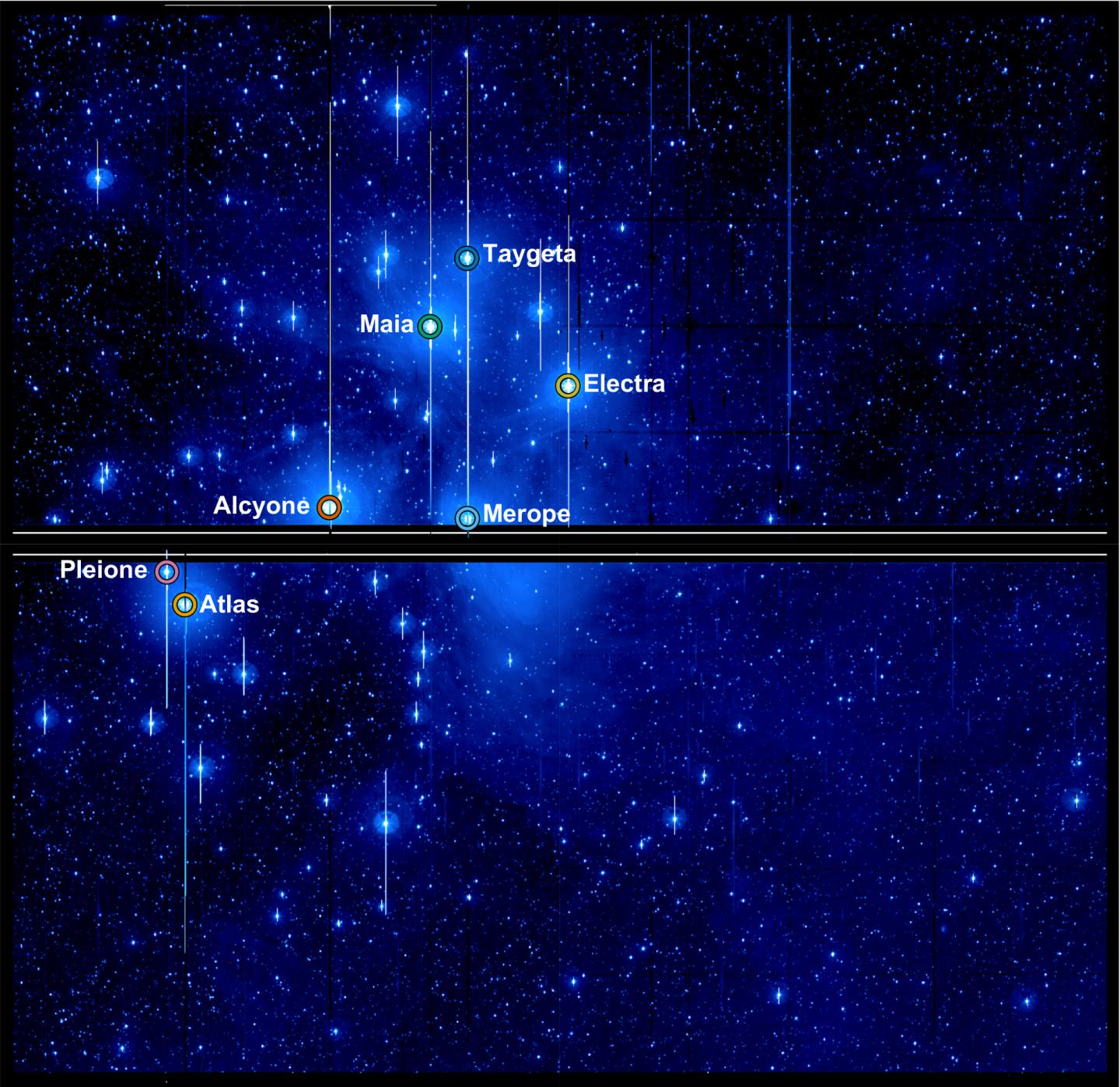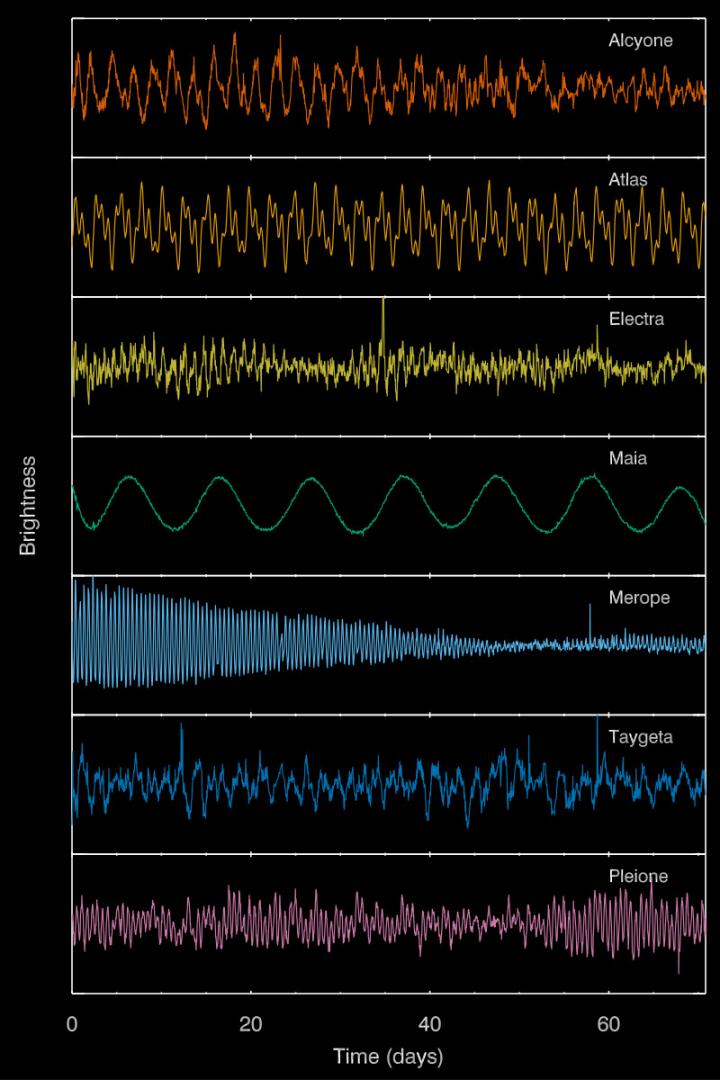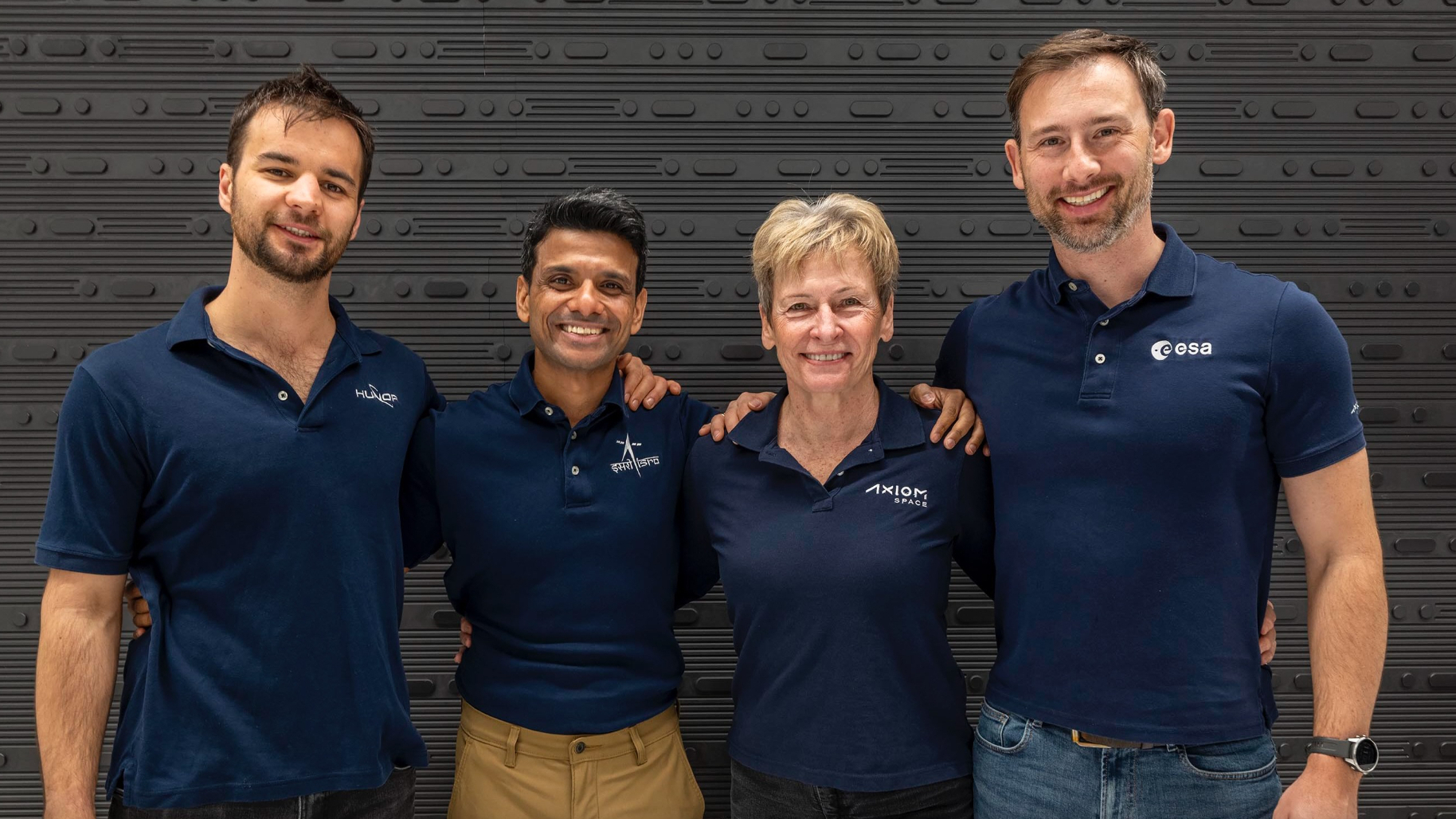NASA's Planet-Hunting Kepler Tackles Mysteries of the Pleiades' 'Seven Sisters'
NASA's Kepler Space Telescope has spent the last eight years searching for Earth-like exoplanets that orbit other stars. Although the telescope's camera can't take clear pictures of bright stars, astronomers have figured out how to study stars using Kepler's distorted photographs.
An international team of astronomers used the Kepler Space Telescope to look at the Pleiades, a bright star cluster that is relatively close to Earth at a little over 400 light-years away. The most brilliant stars of the Pleiades, known at the Seven Sisters, are bright enough to see with the naked eye, yet too bright for high-precision telescopes like Kepler to resolve with their cameras.
Kepler was designed to look at thousands of faint stars and watch for dips in brightness that point to the presence of orbiting objects. When the telescope's camera tries to look at extremely bright stars, the images turn out distorted and overly saturated, with long spikes and other digital artifacts obstructing the view. But with some careful calculations, astronomers have used these distorted images to conduct the most detailed study to date on the variability, or changing brightness, of the Seven Sisters, the Royal Astronomical Society reports. [The Brightest Stars in the Sky: A Starry Countdown]

"Bright targets require a large number of pixels to capture the entirety of the stellar flux," or the energy of the radiation coming from a star, the researchers wrote in a paper published Aug. 11 in the journal Monthly Notices of the Royal Astronomical Society. "CCD saturation, as well as restrictions on data storage and bandwidth, limit the number and brightness of stars that can be observed." CCDs are charge-coupled devices, which Kepler's camera uses to record incoming photons, or particles of light, as pixels in a digital image.
When too much light hits the camera as it's looking at a star, the central pixels become saturated with light, "which causes a very significant loss of precision in the measurement of the total brightness of the star," the Royal Astronomical Society said in a statement. "This is the same process which causes a loss of dynamic range on ordinary digital cameras, which cannot see faint and bright detail in the same exposure."
While the central pixels in an image of a star become too saturated to take accurate scientific measurements of its brightness, the unaffected pixels around that superbright spot still contain accurate information. This is useful for measuring changes in the brightness of these so-called variable stars, the study's authors report.
Kepler looks to the light
"The solution to observing bright stars with Kepler turned out to be rather simple," Tim White, an astrophysicist at Aarhus University in Denmark and lead author of the study, said in the statement. "We're chiefly concerned about relative, rather than absolute changes in brightness. We can just measure these changes from nearby unsaturated pixels, and ignore the saturated areas altogether."
Breaking space news, the latest updates on rocket launches, skywatching events and more!
After measuring the light around a star, White and his colleagues found they still needed to adjust their data for any changes in the spacecraft's motion and possible imperfections in the camera's detector. Even the slightest error could prevent the researchers from detecting a star's variability, the authors suggest, adding those errors could be corrected using simple algorithms.
To account for any discrepancies in their measurements, the authors developed "a new technique to weight the contribution of each pixel to find the right balance where instrumental effects are canceled out, revealing the true stellar variability," the Royal Astronomical Society's press release said. White and his colleagues named this new technique "halo photometry."
Using this new technique, the researchers confirmed that six of the Seven Sisters are slowly pulsating type B stars, which change in brightness over the course of one day. These observations are not news to astronomers, as those stars' classifications have been known for some time, but the study did help White and his team test out their new photometric method by using the Pleiades as a guinea pig, Aarhus University's Stellar Astrophysics Center said in a statement.

Maia Variables
The seventh star, named Maia, is a bit of an outlier, with a brightness that fluctuates over a much longer period of 10 days. Previous studies of this star's light spectrum have found that Maia's atmosphere is also "chemically peculiar," containing excessive amounts of certain elements — most notably manganese. These two weird characteristics are related, the researchers discovered.
"What we saw was that the brightness changes seen by Kepler go hand in hand with changes in the strength of manganese absorption in Maia's atmosphere," Victoria Antoci, a co-author of the study and assistant professor at Aarhus University's Stellar Astrophysics Center, said in the statement. "We conclude that the variations are caused by a large chemical spot on the surface of the star, which comes in and out of view as the star rotates with a 10-day period."
The researchers said that this finding may help settle an ongoing debate in astronomy about something called "Maia Variables," a sub-class of variable stars proposed by Russian astronomer Otto Struve more than 60 years ago. Struve coined the term to account for the strange behavior of Maia, which he thought to be a variable star. However, other astronomers have since investigated the strange star and suggested that there's no need for such a classification. Still others have said that Maia was never a variable star to begin with.
"Sixty years ago, astronomers had thought they could see variability in Maia with periods of a few hours, and suggested this was the first of a whole new class of variable stars they called 'Maia Variables,'" White said, "but our new observations show that Maia is not itself a Maia Variable!"
Whether Maia Variables actually exist is still up for debate, as other stars have been labeled with the unofficial term. But at the very least, perhaps it's time to rename that controversial class of stars.

The planet hunt continues
While this research didn't lead to any new exoplanet discoveries — which is Kepler's primary purpose — the methods the researchers developed to work around the bright-light problem will be useful in the continued search for Earth-like planets outside the solar system, the researchers said in the paper. Using halo photometry, researchers can now look for exoplanets orbiting bright stars like the Seven Sisters.
NASA's next big planet-hunting mission, the Transiting Exoplanet Survey Satellite (TESS), could also study brighter stars with the help of halo photometry, the authors wrote, adding that even the James Webb Space Telescope can take advantage of this new method when it starts peering into the depths of space in 2018.
Email Hanneke Weitering at hweitering@space.com or follow her @hannekescience. Follow us @Spacedotcom, Facebook and Google+. Original article on Space.com.
Join our Space Forums to keep talking space on the latest missions, night sky and more! And if you have a news tip, correction or comment, let us know at: community@space.com.

Hanneke Weitering is a multimedia journalist in the Pacific Northwest reporting on the future of aviation at FutureFlight.aero and Aviation International News and was previously the Editor for Spaceflight and Astronomy news here at Space.com. As an editor with over 10 years of experience in science journalism she has previously written for Scholastic Classroom Magazines, MedPage Today and The Joint Institute for Computational Sciences at Oak Ridge National Laboratory. After studying physics at the University of Tennessee in her hometown of Knoxville, she earned her graduate degree in Science, Health and Environmental Reporting (SHERP) from New York University. Hanneke joined the Space.com team in 2016 as a staff writer and producer, covering topics including spaceflight and astronomy. She currently lives in Seattle, home of the Space Needle, with her cat and two snakes. In her spare time, Hanneke enjoys exploring the Rocky Mountains, basking in nature and looking for dark skies to gaze at the cosmos.
